Planning a trip to the beautiful shores and ancient markets of Tunisia? If you're applying for a visa, one of the first and most critical items on your checklist is the passport photo. It seems easy, but a simple mistake with the photo—like the wrong background color or size—is a common and completely avoidable reason for an application to be delayed or even rejected.
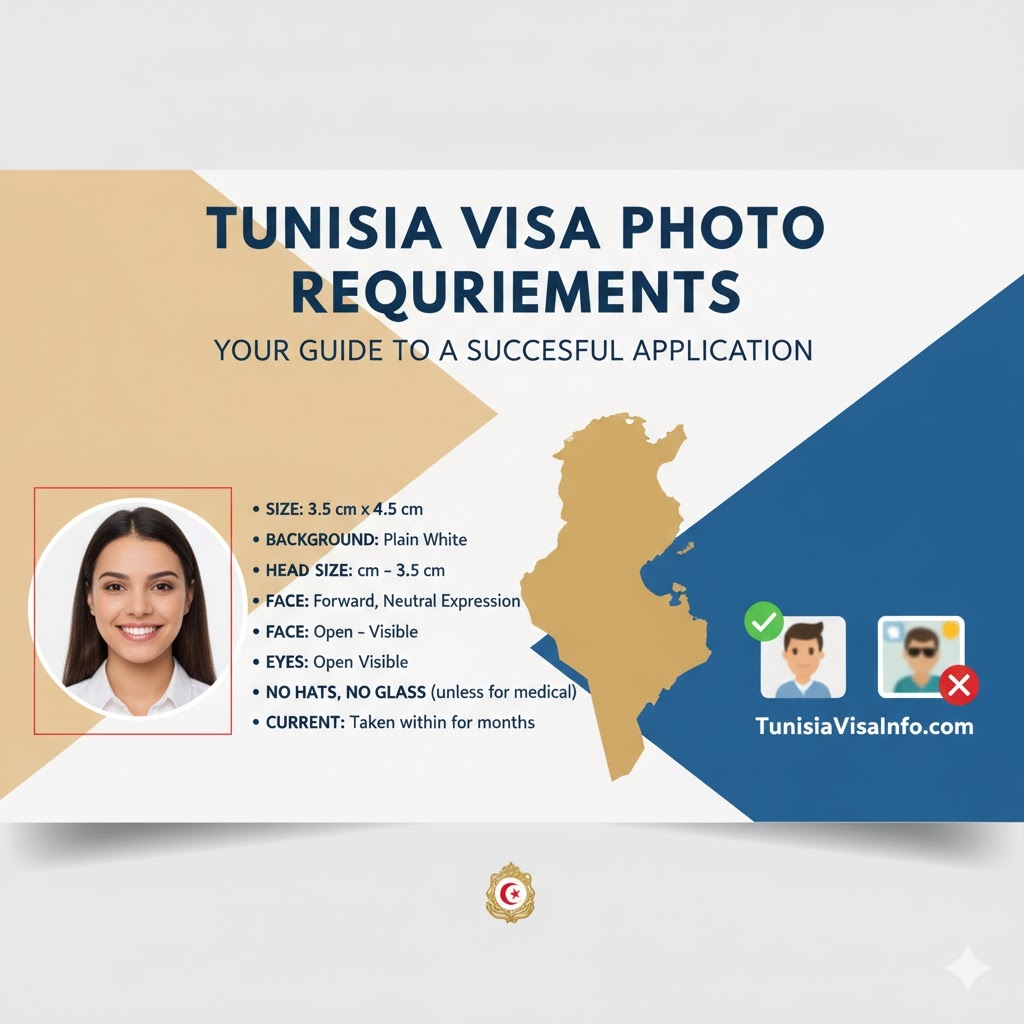
Unlike countries with universal e-Visa portals that check your digital file instantly, a Tunisian visa application often requires physical photos for an embassy or visa-on-arrival process. This guide will walk you through every single requirement to ensure your photo is perfect the first time.
What is the official photo size for a Tunisia visa?
This is the most important technical detail. The standard and most widely accepted size for a Tunisian visa photo is:
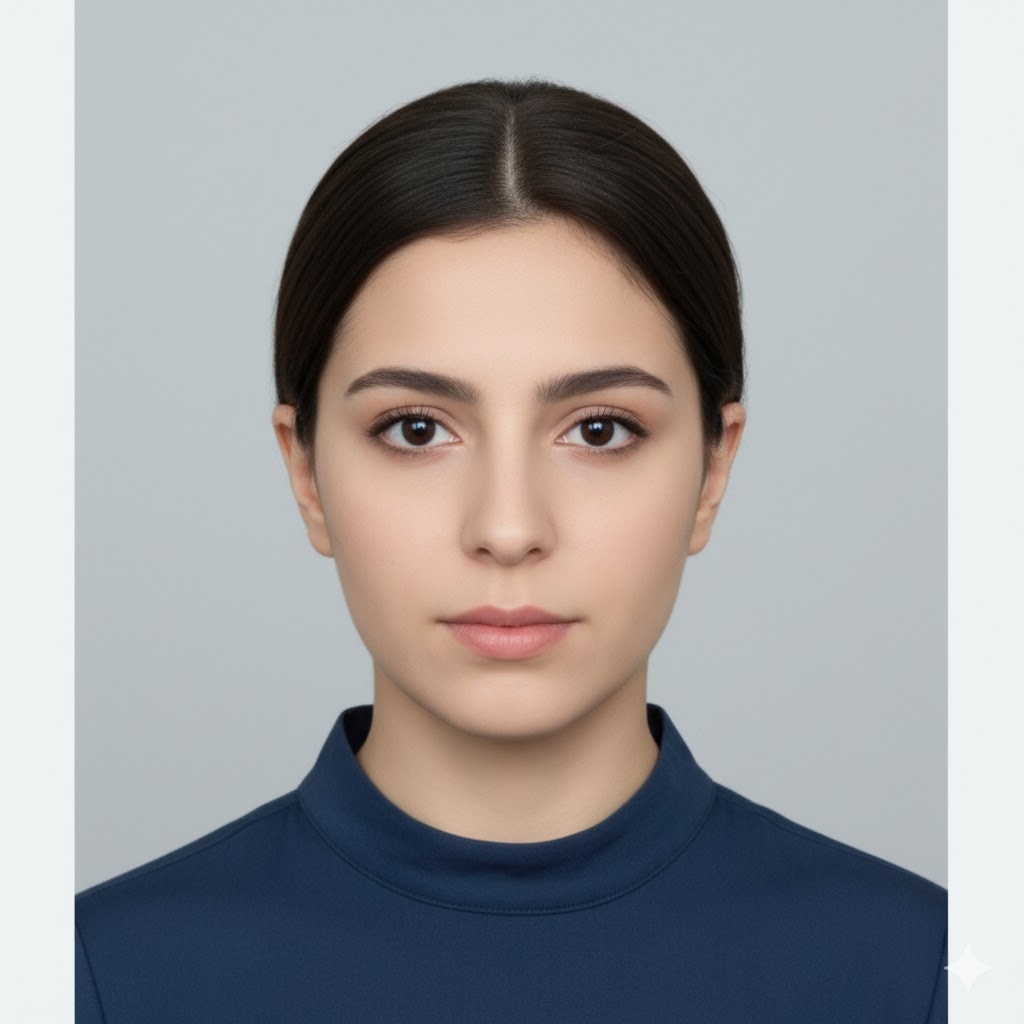
3.5cm x 4.5cm (or 35mm x 45mm)
This is a standard European passport photo size, which makes it easy to request from any professional photo service. Don't try to submit a standard 2x2 inch (51x51mm) photo, as it will likely be rejected.
What is the correct head size or face position in the photo?
This is a key technical specification. Your head, from the top of your hair to the bottom of your chin, should occupy 70-80% of the total photo height.
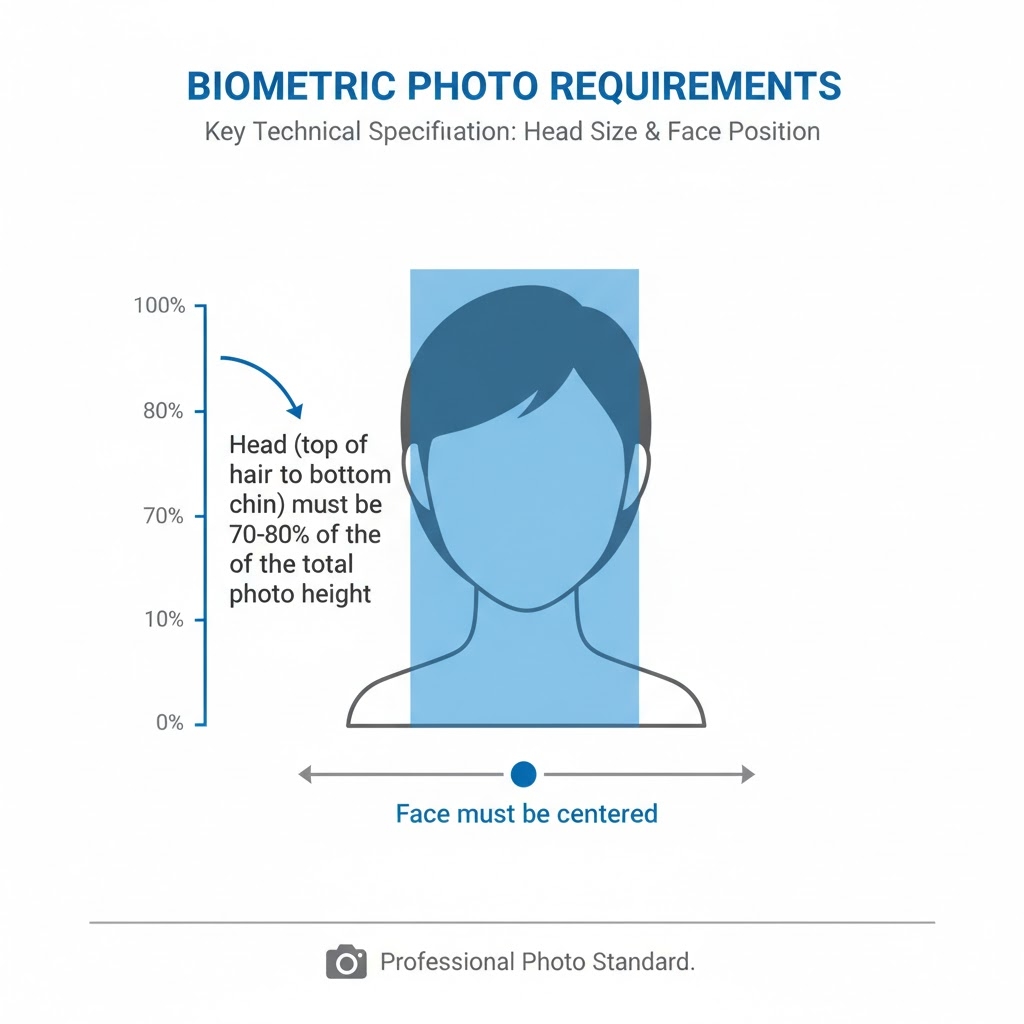
This means your face should be in the center, not too large or too small. Any professional photo service will know this as the standard "biometric" requirement.
How many photos do I need for my Tunisia visa application?
You generally need to submit two (2) identical photos.
One photo is typically attached (glued, not stapled) to your visa application form.
The second photo is often submitted loose with your passport and other documents.
Problem Solver: Do not staple your photos to the application. This can damage the photo and is often grounds for rejection. Use a small dot of glue stick if you must attach it yourself, or simply include it as instructed by the embassy.
What is the correct background color for the visa photo?
The required background must be plain white.
It cannot be off-white, light grey, or light blue.
It must be a pure, uniform white background with no shadows, patterns, or objects visible.
This high-contrast requirement ensures your features are clearly visible.
What should I wear for my visa photo?
This is a common question. While there's no strict dress code, follow these tips to avoid Tunisia Visa Photo Requirement rejection:
Wear contrasting colors: Since the background is pure white, do not wear a white shirt, white blouse, or very light-colored clothing. The photo may be rejected if your clothing blends into the background. Choose a dark shirt (blue, black, red, etc.) for clear contrast.
Avoid uniforms: You cannot wear any kind of uniform or clothing that looks like one.
No accessories: Do not wear hats, non-religious headbands, or sunglasses.
Can I wear glasses in my Tunisia visa photo?
It is highly recommended to take your glasses off.
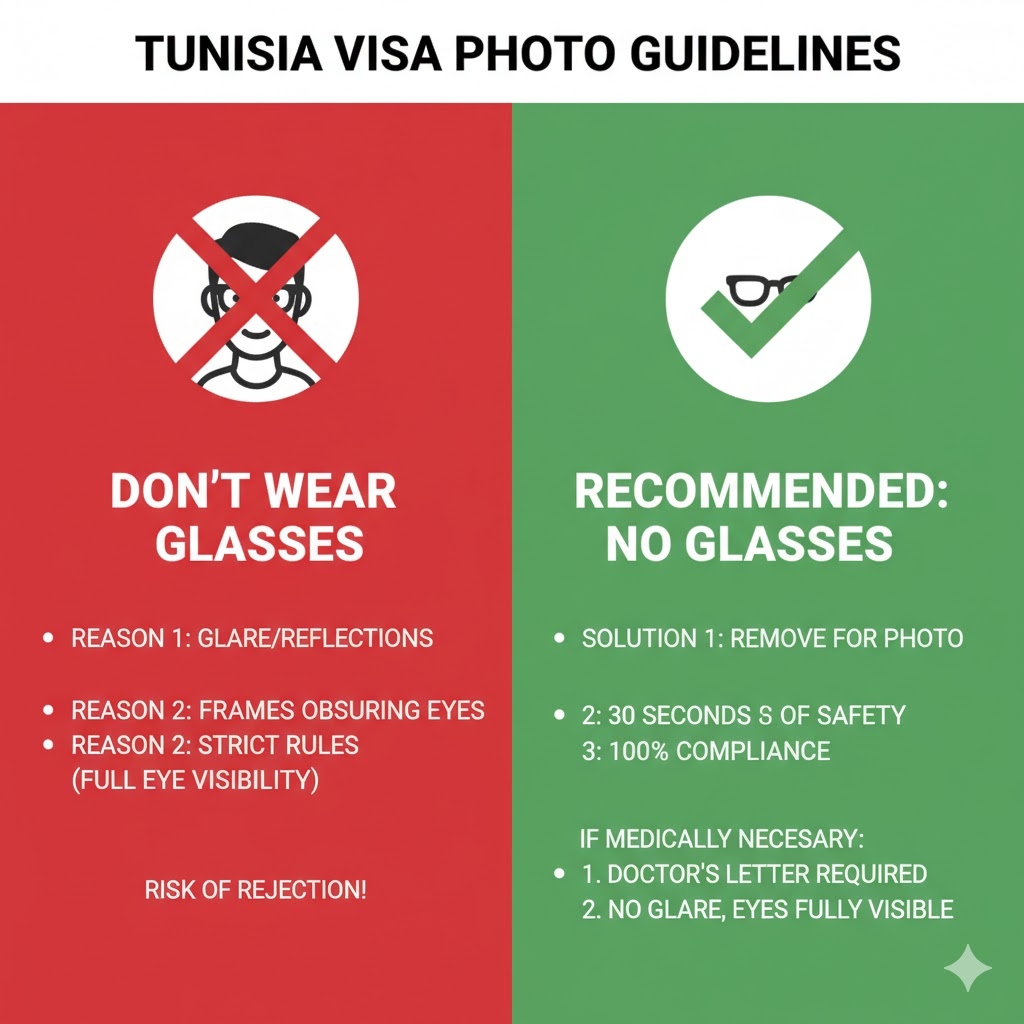
Why? Even if you have anti-glare lenses, the smallest reflection can obscure your eyes, leading to rejection.
The Problem: The rules are strict: your eyes must be fully visible. Frames, even thin ones, can sometimes cast shadows or cover the edges of your eyes.
The Solution: To be 100% safe, simply remove them for the 30 seconds it takes to snap the photo. If you absolutely cannot remove them for medical reasons, you must provide a doctor's letter, and the photos must have zero glare and no part of your eye obscured by the frame.
Can I wear a headscarf (hijab) or other religious head coverings?
Yes, you can—but only for documented religious reasons. However, you must follow these strict rules:
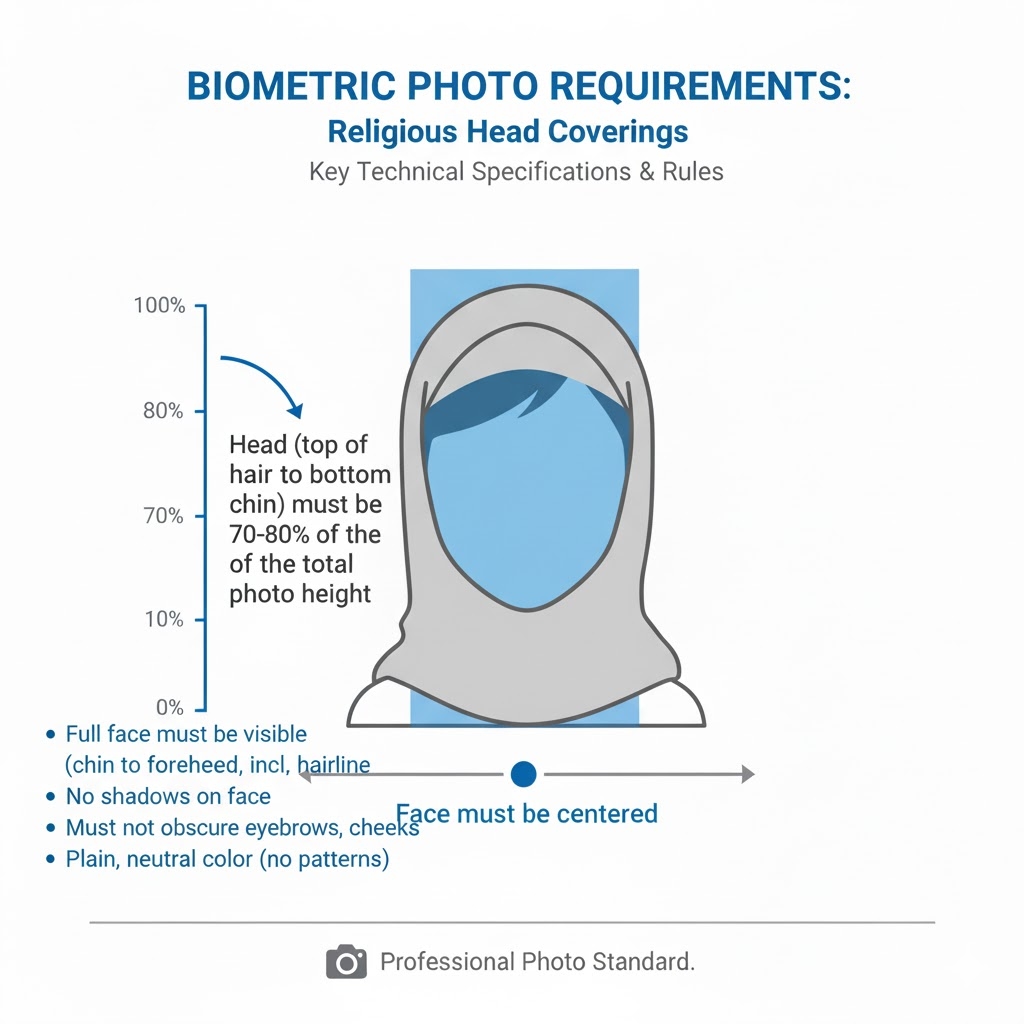
Your full face must be visible, from the bottom of your chin to the top of your forehead (including your hairline, if possible).
Your head covering cannot cast any shadows on your face.
The covering must not obscure your eyebrows, cheeks, or any part of your face.
The covering itself should be of a plain, neutral color if possible, and not patterned.
What are the other key rules for a valid photo? (The "Do's and Don'ts" Checklist)
To avoid rejection, make sure your photo meets all these "biometric" standards:
Expression: You must have a neutral expression. No smiling, grinning, or frowning. Your mouth must be closed.
Gaze: You must be looking directly at the camera (frontal view). Your head cannot be tilted up, down, or to the side.
Recent: The photo must be recent, taken within the last six (6) months. Don't use leftover photos from an old passport application.
Quality: The photo must be a high-quality color print on proper photo paper. It cannot be blurry, pixelated, over- or under-exposed.
Focus: Your face must be sharp and in clear focus.
Accessories: Do not wear hats, non-religious headbands, or sunglasses. Small earrings may be permissible, but it's safer to remove any large or distracting jewelry.
Can I use a photo from an automatic photo booth?
Yes, but it's risky. While many modern photo booths have a "visa photo" setting, you are responsible for ensuring it meets all the rules.
The Risk: The machine won't tell you if you are casting a small shadow or if your hair is covering your eyebrow. A human photographer will check these things.
The Solution: If you use a booth, carefully check the photo against the checklist in this guide before you leave. It's often safer to spend a few extra dollars for a professional service to guarantee it's right.
What happens if my photo is rejected at the embassy?
This is a major "real problem" that causes delays. If the consular officer deems your photo invalid, they will not process your application.
Your application will be put on hold, and you will be asked to submit new, correct photos. This can delay your visa approval by days or even weeks, potentially ruining your travel plans. It is always better to get the photo right the first time.
I'm eligible for a Visa on Arrival. Are the photo rules the same?
Yes, and they are even more critical. If you are applying for Tunisia Visa on Arrival at the airport in Tunisia, you must have your compliant photos in your hand.
The Problem: Unlike at an embassy, you cannot "come back tomorrow" with new photos. If your photos are rejected at the airport, you have a serious issue.
The Risk: There may not be a photo booth available in the immigration hall. You could be denied entry and put on the next flight back home, all for a non-compliant photo.
The Solution: Have your two 35x45mm, white-background photos ready in your carry-on luggage with your passport and visa fee.
Where is the best place to get Tunisia-compliant visa photos?
A professional photo studio or a photo service.
Don't try to take it at home with your phone. The lighting, shadows, and background will almost certainly be wrong.
Do go to a service that specifically lists "visa photos."
Pro Tip: When you go, don't just ask for a "passport photo." Tell the photographer you need a "Tunisian visa photo" or a "Schengen-size photo (35x45mm) with a white background." This shows them you know the exact specifications and ensures they don't give you the wrong-sized print.
